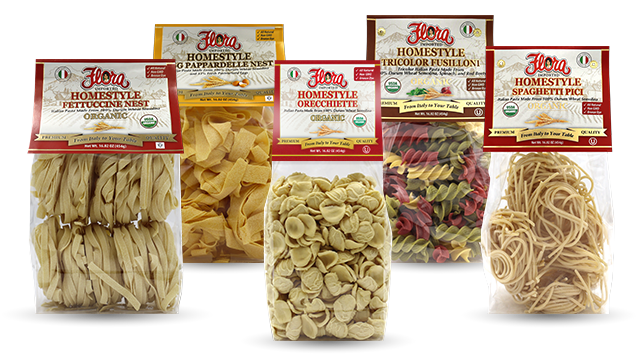UNFILTERED & EXTRA VIRGIN OLIVE OIL
Flora Extra Virgin Organic Unfiltered Olive Oil comes from the first crush of olives fresh from the fields of Puglia. No heat or chemical additives are used, with the sediments settling naturally prior to decanting. The olive particles remaining add to the deep, fruity flavor, aroma, and spicy finish. Perfect for a dipping oil, on vegetables, as a salad dressing, or drizzled onto pasta, grains or soup. SHOP>

SAN MARZANO TOMATOES
San Marzano tomatoes are grown in the volcanic soil in the shadow of Mount Vesuvius, with a taste and character so unique their authenticity is protected by the Italian government. You'll find the badges of the Italian Cosorzio certifying authority on each can of Flora San Marzano tomatoes, and a unique number assigned to verify authenticity. Only the best will bear the Flora name. SHOP>

HOMESTYLE PASTA
There are over 350 different types and shapes of pasta in Italy, each designed for a particular sauce. Flora imports the very best Italian pasta, made from organic durum semolina wheat flour. Most ordinary pasta is made with modern Teflon dies. Flora Homestyle uses Old World bronze dies and low temperature drying to create a pasta with unrivaled flavor and a texture that clings to your sauce. SHOP>
